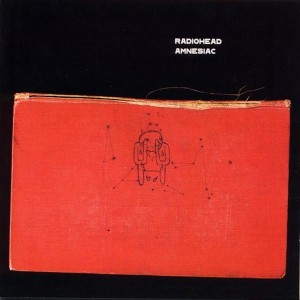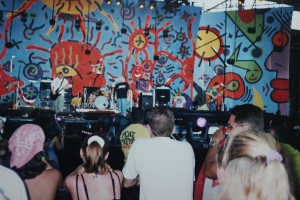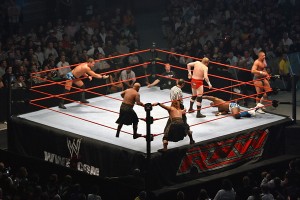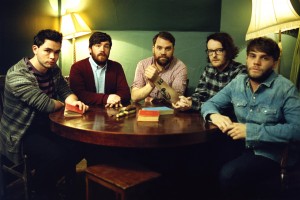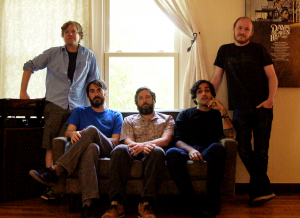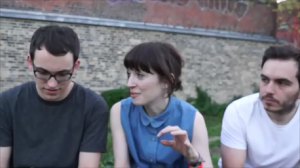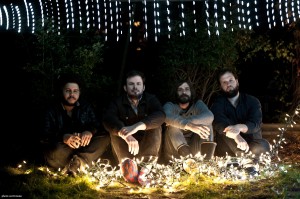PeteHatesMusic Visits the British Music Experience in London
Cleveland has the Rock and Roll Hall of Fame and um, nothing else of note. London has everything else of note and um, the British Music Experience. That is not to say that the British Music Experience is the Cleveland of Museums, but the Rock and Roll Hall of Fame it is not.
The British Museum Experience (“BME”) opened on March 13, 2009, and occupies a spot in the O2 Arena complex in North Greenwich. There is no induction or criteria to be in the BME from my knowledge, but some kind of key contribution to the various music scenes in Britain helps.
PeteHatesMusic visited the BME last week, and our thoughts and random musings are below.
When you arrive, you are handed a smart card of sorts – a credit card-sized, chip embedded storage card. Whenever you come across information you want to refer to at home later on, you simply put your card to the reader, the information is stored on the card, and you can access it via the BME website with your own unique PIN later on. This is great for people like us, who have severe memory damage due to excessive alcohol consumption.
After receiving the card, you are forced to watch a fairly lame intro video, showing you how the museum works and how it is arranged. The video might have been odd but it was really cool to leave to a standing ovation. Maybe I should be a rock star after all.
The museum space is arranged almost like the gates at an airport terminal, with a circular main area, with rooms branching off from the main area. The rooms were dedicated to different eras of music: 1945-62, 1962-66, 1966-70, 1970-76, 1976-85, 1985-93, and 1993-2009. The last 3 years are but a dream.
The rooms were relatively small, often containing 3 or so cabinets showcasing artifacts from the different eras. The idea behind the display cases was very innovative. Each case had either a guitar fret board or a keyboard in front of it. As you moved your fingers across the (germ-riddled) musical parts, a different object in the display case would be highlighted with a spotlight, and the corresponding video would load up on the screen adjacent to the cabinet. You could then use your smart card to capture the information for later viewing.
This is a great idea – in theory. The problem was that at least half of the card readers were not working! This was confirmed when I came home and couldn’t load up all of the Spice Girls videos I carefully selected.
The BME did have some impressive artifacts, such as the Union Jack Epiphone guitar played by Noel Gallagher, a Vintage dress and belt worn by Amy Winehouse, the Union Jack dress worn by Geri Halliwell, a Ziggy Stardust numbers outfit that David Bowie rocked in 1972, and a pair of John Lennon’s glasses. The BME has a slight advantage over the Rock Hall of Fame in that it can feature memorabilia and information on virtually any band, and bands that are relatively new (and don’t need to wait 25 years before induction).
Another highlight of the museum was the Gibson Sound Studio. This was a studio with lots of guitars, in addition to drums and a vocal booth. You could record your sessions and upload it to your smartcard. I did my best to not damage the smartcard by transferring the data from my “singing” to the card.
There was also a Dancing Through the Eras exhibit (that didn’t seem to be open) in which you can mimic the dances across the 50s and 60s that your parents did (or you, if you’re an older reader), as well as other eras. You could also upload your dance floor moves to your smartcard, and then YouTube if you think you’re that great (spoiler alert: you’re not).
The special exhibit on the first floor was about Bob Marley, which featured lots of great archival photographs, as well as artifacts, and interviews with artists like Nas.
Although the museum was very interactive, the one thing it was missing was a clear sense of musical history or narrative across time, despite the era-themed rooms. There was a video screen with thumbnail pictures of news events, but it was tedious to scroll through and load up using the trackball and tiny images. It was good that you could take the information home, but all of the interaction meant a lack of written panels, and a lack of a clear narrative.
Fans of interactive museums, British music history, and the Spice Girls music artifacts should check out the British Museum Experience. Casual fans or people hoping to gain a thorough understanding of British music history should hit up some textbooks beforehand, or perhaps give this museum a pass.


